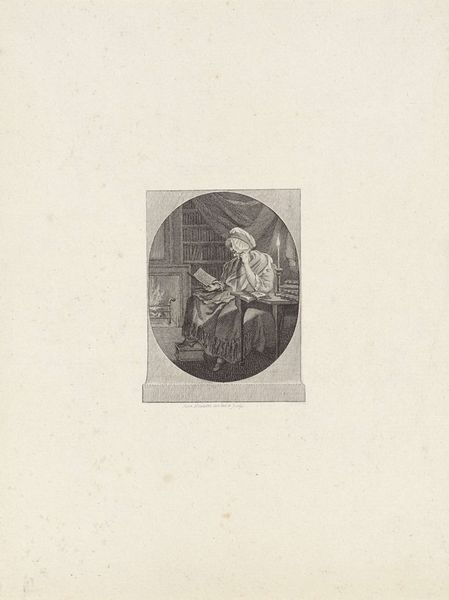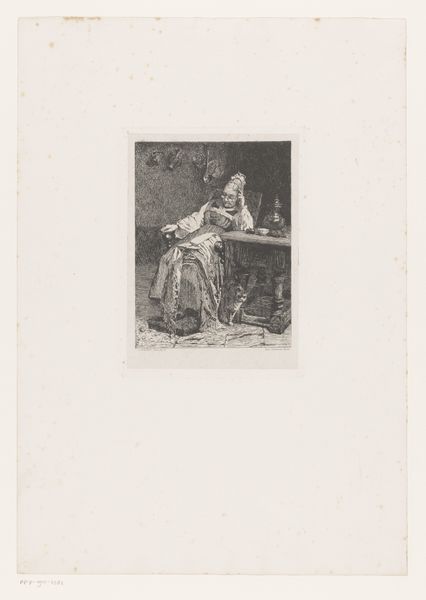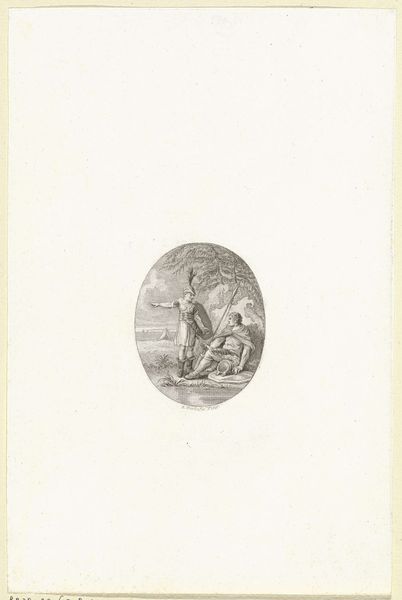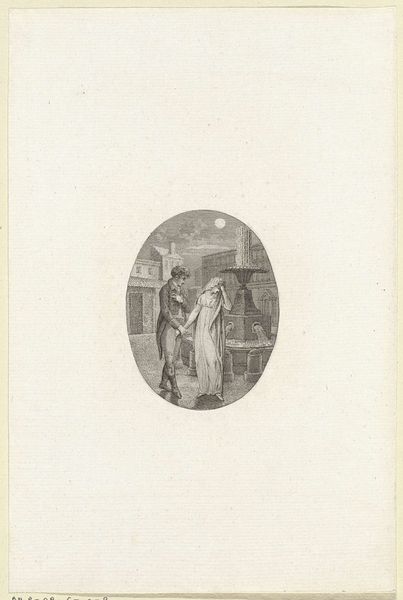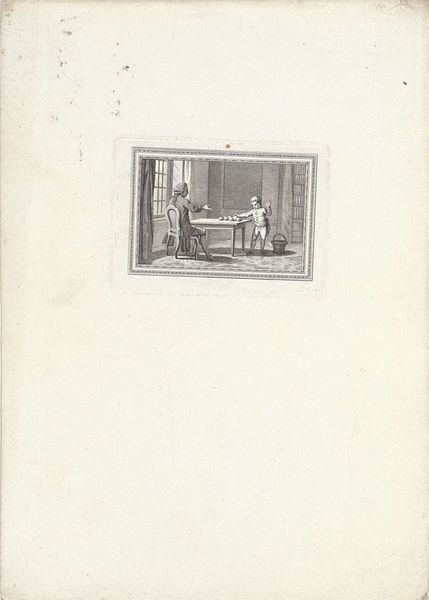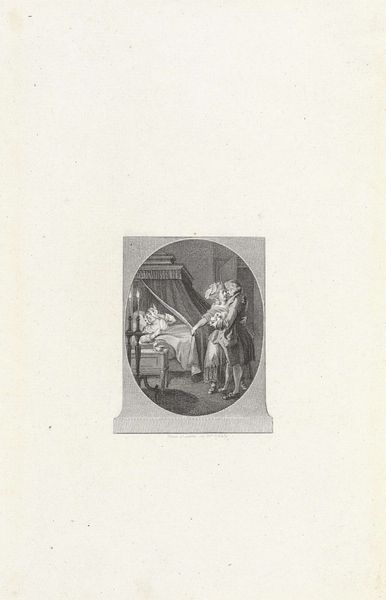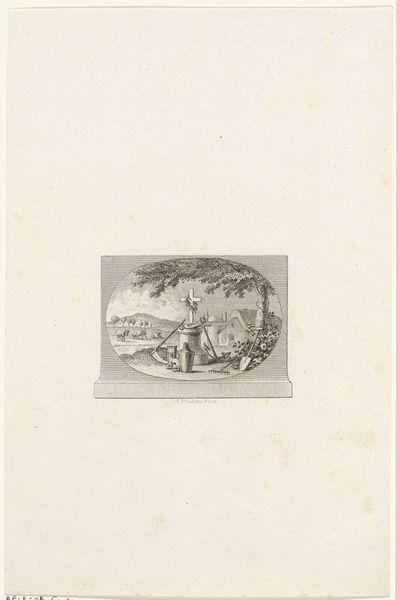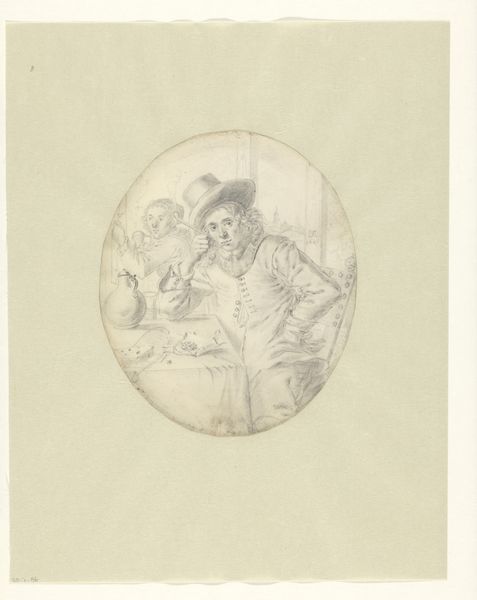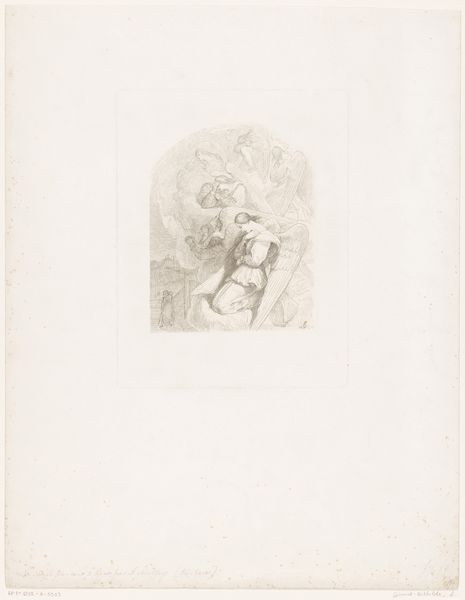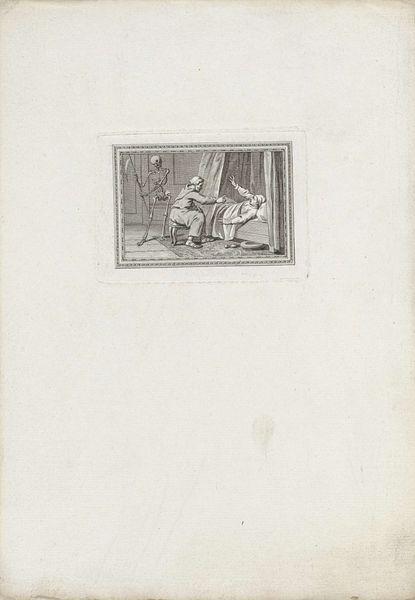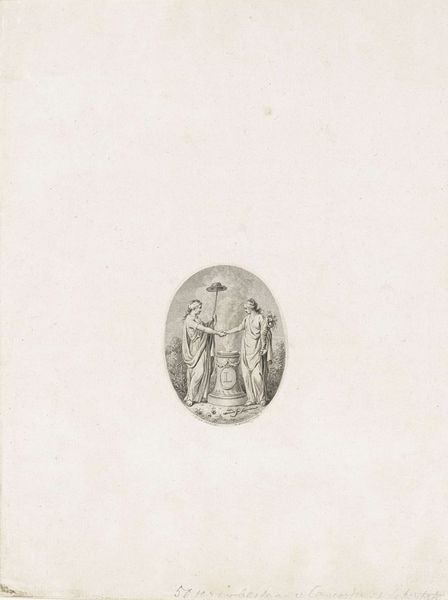
drawing, ink, pen
#
drawing
#
neoclacissism
#
ink
#
pen
#
genre-painting
#
academic-art
Dimensions: height 199 mm, width 150 mm
Copyright: Rijks Museum: Open Domain
Editor: Here we have Reinier Vinkeles' "Woman Writing by Candlelight," made with pen and ink sometime between 1751 and 1816. I find it immediately intimate, a snapshot of a woman's domestic life. What do you see in this piece, beyond the surface? Curator: It's precisely that sense of intimacy you identified that resonates. The woman is writing, presumably composing a letter, illuminated only by candlelight. What sociopolitical narratives does this illuminate, pardon the pun? Consider who had the luxury of literacy and leisure during this era. Editor: You're right, I hadn't considered that deeply. I suppose it suggests a certain level of privilege and access to education. Curator: Exactly. And access often intersects with gender, class, and even race. Think about the societal expectations of women during the late 18th century. Writing could be an act of quiet rebellion, a form of self-expression within confinement. How does this image challenge or reinforce those power structures? Editor: I see your point. It could be viewed as empowering, perhaps. Her posture and intent expression hint at determination, challenging traditional passive female roles. Curator: Indeed. Also consider the symbolism of light in contrast to darkness. What does the singular candle represent in a world where access to knowledge, through written word, was tightly controlled? This contrasts with Neoclassical art from that time period which highlighted men doing heroic actions in direct sunlight. Editor: So, even this quiet domestic scene engages with larger social issues about female intellect? Curator: Precisely. It compels us to interrogate assumptions about women, labour, and the politics embedded in everyday acts like writing a letter, even centuries later. I believe looking through the lens of intersectionality uncovers rich context for interpreting this art. Editor: I'll never look at a woman writing the same way. It’s more than just a genre scene. Thank you for this revealing dialogue!
Comments
No comments
Be the first to comment and join the conversation on the ultimate creative platform.
